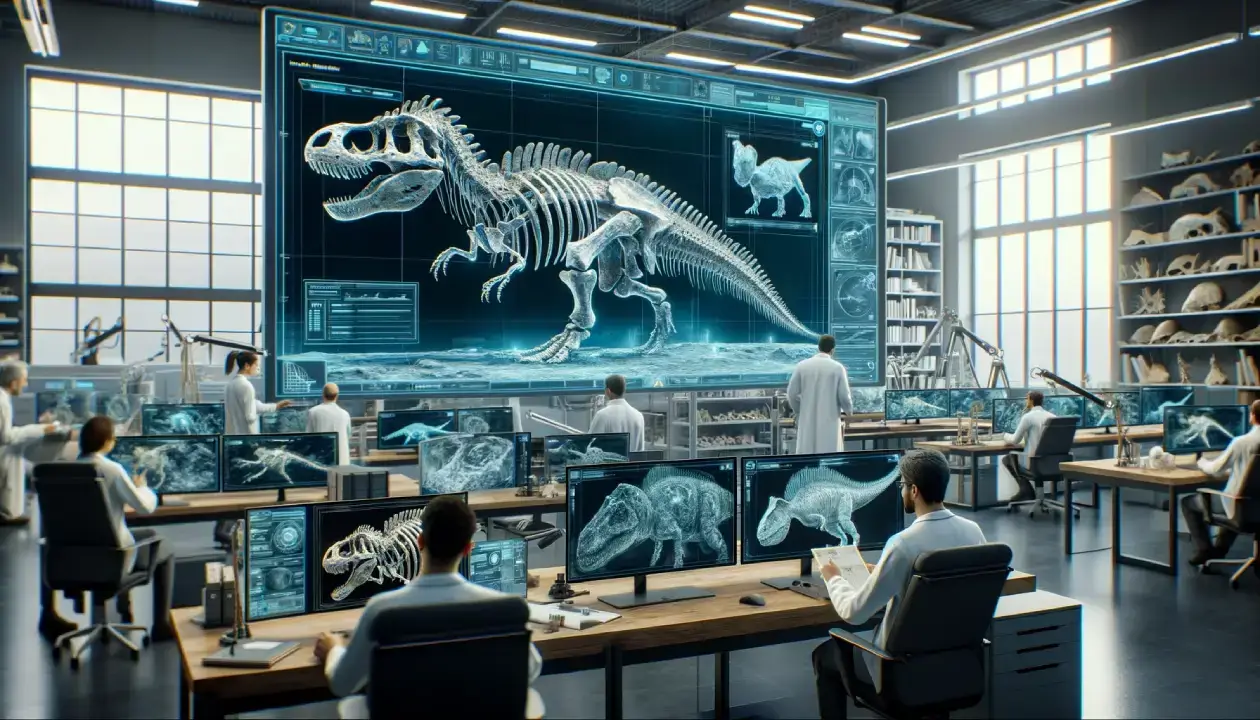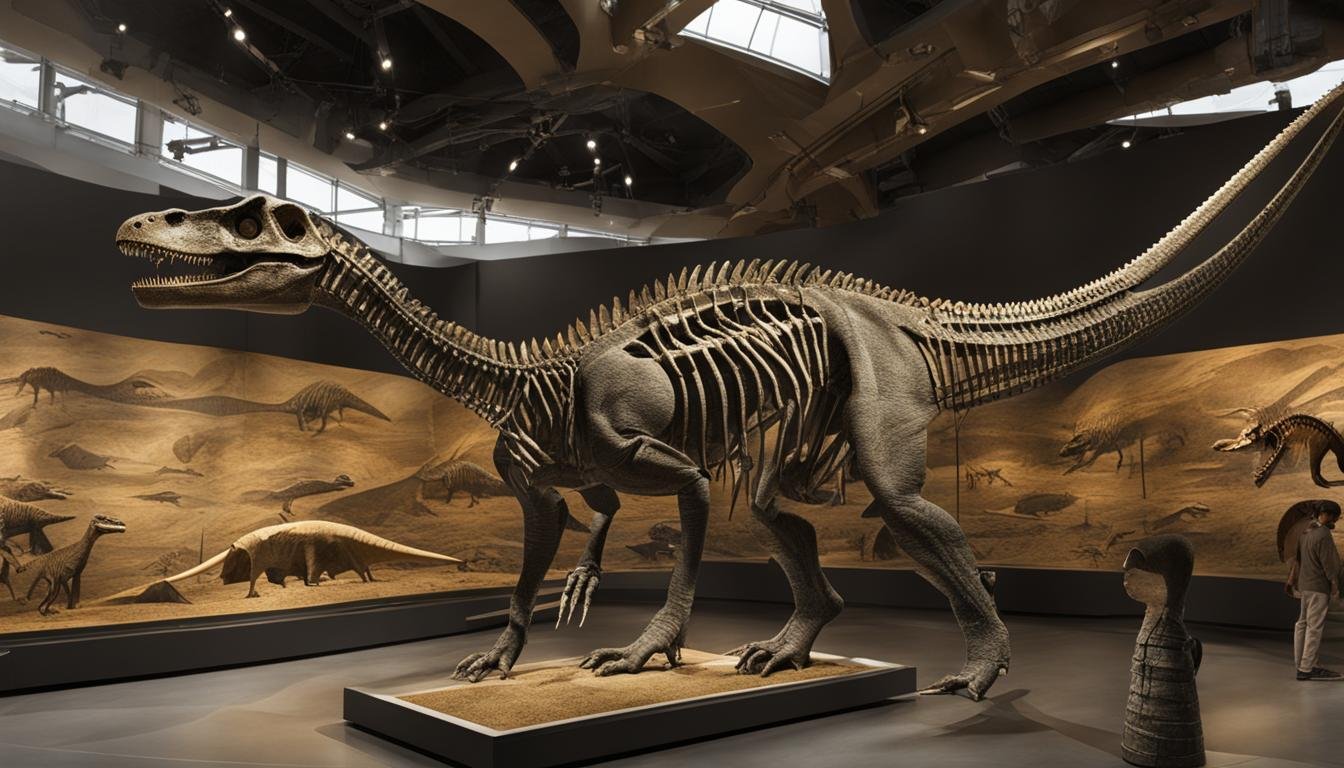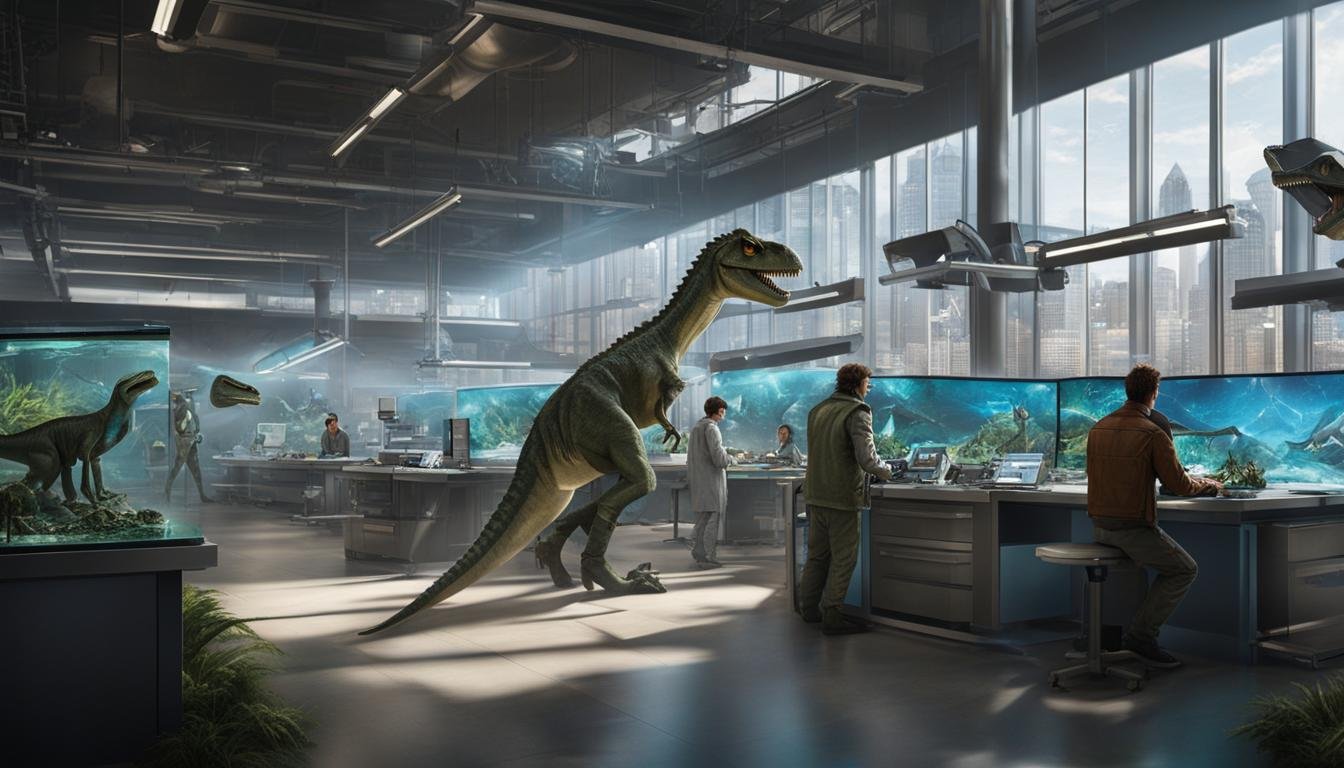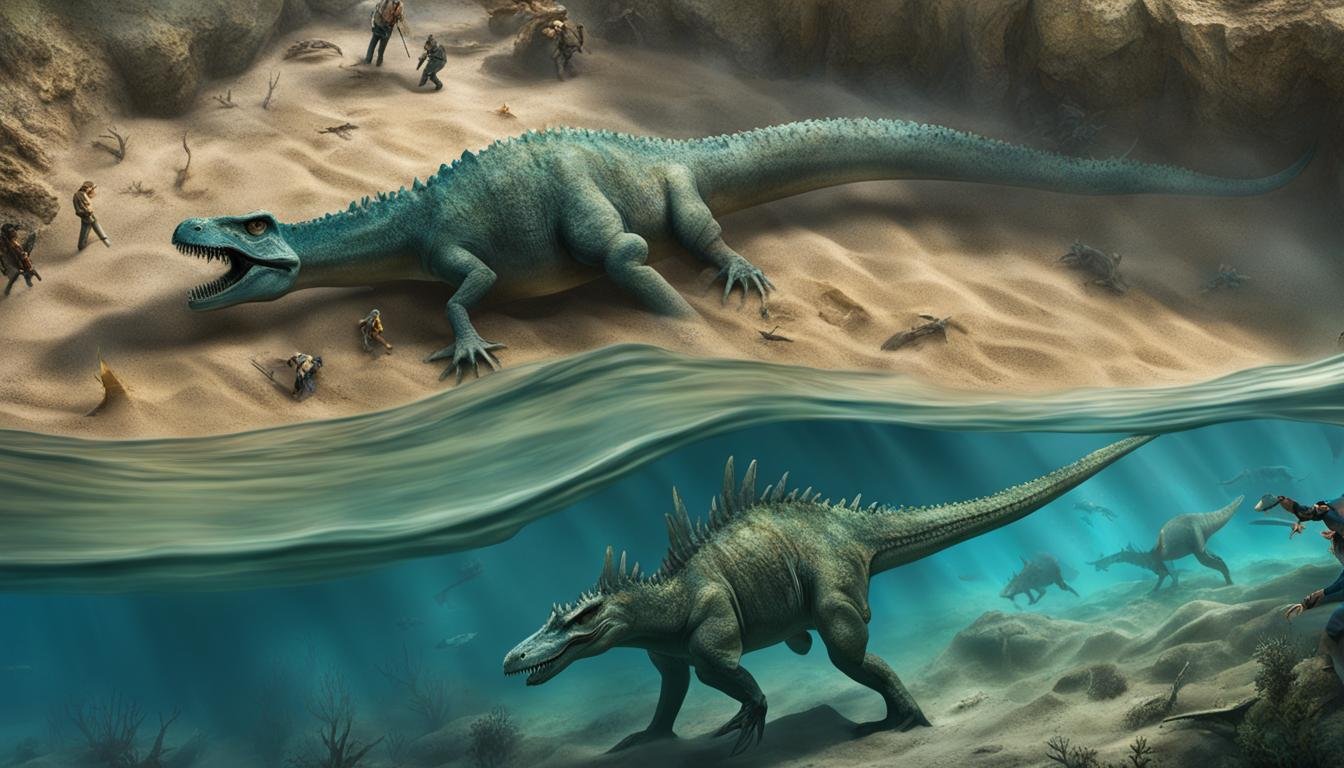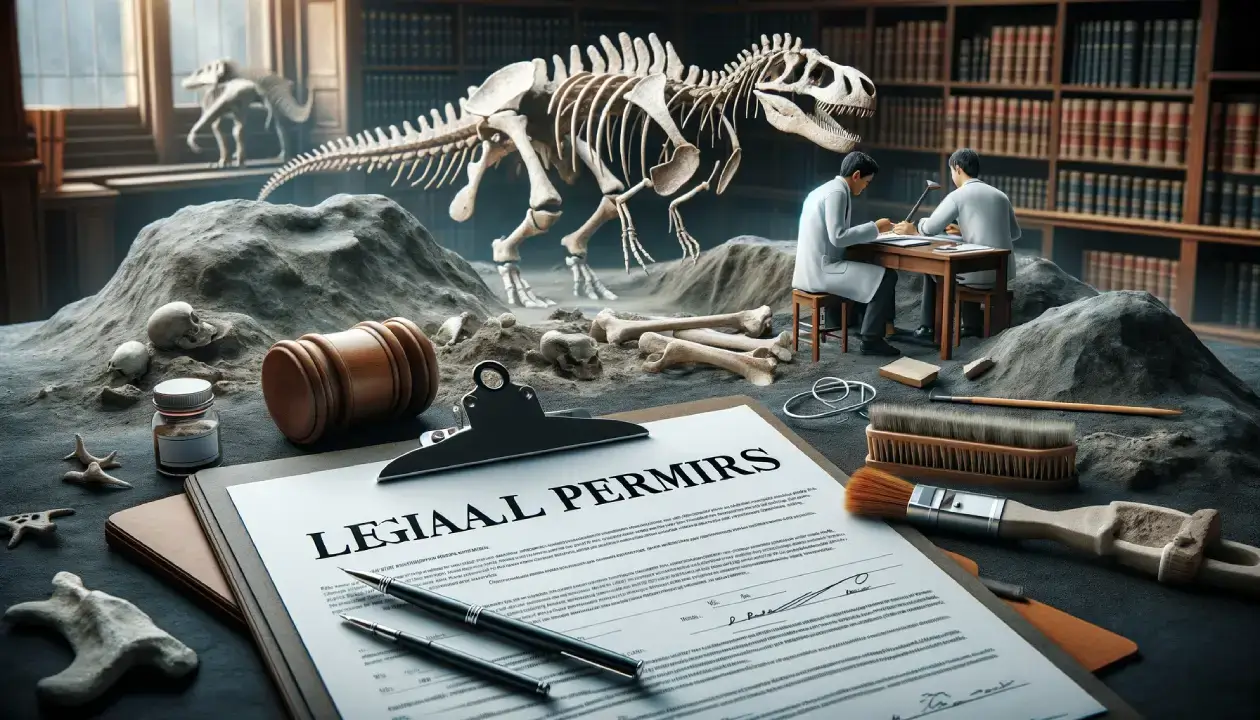Paleontology has long painted pictures of prehistoric life, but now, with the advent of virtual paleontology and 3D fossil reconstruction, these pictures leap from two dimensions into three, promising a revolution in our understanding of ancient life. This article is a treasure trove for educators, students, scientists, and anyone fascinated by dinosaurs and prehistoric life. We’ll dive deep into what virtual paleontology entails, the monumental importance of 3D fossil reconstructions, and why this matters not just to scientists but to anyone curious about the distant past. If you’ve ever marveled at the skeletons of dinosaurs in museums or wondered about the creatures that roamed the Earth before us, this journey through the virtual reconstruction of prehistoric life will feed your curiosity and expand your understanding.
| Key Points | Details |
|---|---|
| Virtual Paleontology | A blend of 3D modeling and traditional methods for analyzing fossils. |
| 3D Fossil Reconstruction | Enables detailed, non-invasive studies and global data sharing. |
| Technological Evolution in Paleontology | Shift from manual excavation to digital techniques like CT scanning. |
| Challenges in Digital Paleontology | Includes data accuracy, technical and financial hurdles, and data sharing issues. |
| Applications and Public Engagement | Uses technology for biomechanical analysis and enhances museum experiences. |
| Future of Paleontology | Marked by advancements in digital restoration and computational analyses. |
What is Virtual Paleontology and 3D Fossil Reconstruction?
Definition of Virtual Paleontology
Virtual paleontology is the use of digital tools and techniques to analyze and reconstruct fossils. This cutting-edge field combines elements of computer science, 3D modeling, and traditional paleontology to bring fossilized remains to life. By creating digital representations of fossils, scientists can explore aspects of ancient organisms that were previously hidden or simply impossible to infer from the fossils alone.
Importance of 3D Fossil Reconstruction
The significance of 3D fossil reconstruction in paleontology cannot be overstated. It enables scientists to:
- Examine Fossils Beyond Physical Limits: Delicate or inaccessible fossilized remains can be studied without the risk of damage.
- Share Discoveries Globally: Digital models can be shared with the international scientific community, facilitating collaboration and education.
- Revive Extinct Creatures: By reconstructing the musculature and other soft tissues, we can simulate how extinct animals may have moved and interacted with their environment.
- Educate and Engage: 3D models are invaluable for educational purposes, making learning interactive and immersive.
By leveraging these digital techniques, virtual paleontology provides a new lens through which we can observe the ancient past, bringing us closer than ever to creatures that have long vanished from the Earth.
<image> Imagine a digital recreation of a dinosaur fossil using 3D modeling, displaying the skeleton structure, possible musculature, and the creature in a lifelike pose set against a museum backdrop for educational purposes. </image>
Dig deeper into the fascinating world of paleontology and discover how technology is revolutionizing our understanding of prehistoric life.
Historical Context and Evolution of the Field
The journey of paleontology from its rudimentary beginnings to the advanced virtual realm is a tale of technology meeting tenacity. This progression not only reflects our evolving understanding of the prehistoric past but also the innovative ways we’ve learned to uncover its secrets.
Early methods in paleontology
The early days of paleontology were marked by painstaking manual labor. Fossil hunters would scour the Earth’s surface for visible remains, which they would then dig out with picks and shovels. The tools were basic: hammers, chisels, and brushes. Measurements were taken by hand, and sketches were made to record finds. Excavation sites were often a race against time and the elements, with the ever-present risk of damaging the precious relics they sought to study.
Transition to digital techniques
The shift to digital techniques revolutionized the field. Technology offered new ways to see beneath the surface without disturbing it. Ground-penetrating radar, magnetic resonance imaging (MRI), and computerized tomography (CT) scans came into play, allowing paleontologists to peer inside fossils in three dimensions and with unprecedented clarity. This non-invasive peek into prehistory was groundbreaking.
The pioneering steps and key contributors
It was the bold vision of pioneering scientists and engineers that propelled paleontology into the digital age. Key contributors, like Jack Horner, used CT scanning to study dinosaur embryos, while others employed laser scanning to create 3D models of fossils. The contributions of these individuals not only advanced the field technically but also culturally, by making paleontology more accessible and engaging to the public.
<image> Create an illustration showing early paleontologists at a dig site, equipped with primitive tools, juxtaposed with modern scientists using computers and scanning equipment to analyze a dinosaur fossil. </image>
Discover more about the fascinating tools and techniques used in fossil excavation through our in-depth guide: Tools & Techniques in Fossil Excavation.
Techniques in Virtual Paleontology
The techniques involved in virtual paleontology are as diverse as they are sophisticated, employing a range of imaging and analytical methods to bring the ancient world into the digital age. Here, we’ll explore the arsenal of tools that scientists use to reveal the hidden details of fossils.
Overview of Tomographic and Surface-based Methods
Tomographic methods allow scientists to visualize internal structures in three dimensions without cutting into a fossil. These include:
- X-ray Computed Tomography (CT)
- Magnetic Resonance Imaging (MRI)
- Neutron Tomography
- Focused Ion Beam (FIB) Tomography
Surface-based methods, on the other hand, are used to capture the external details of fossils, which include:
- Laser Scanning
- Structured Light Scanning
- Photogrammetry
X-ray Computed Tomography (CT)
X-ray CT has become a staple in virtual paleontology. It uses X-rays to create cross-sectional images of a fossil. These ‘slices’ can be reassembled into a 3D model, allowing paleontologists to study the fossil’s internal and external structure with a level of detail that is not possible with traditional methods.
Surface Scanning and Photogrammetry
Surface scanning captures the contour of a fossil’s surface, which can be used to create highly detailed 3D models. Photogrammetry, a more accessible method, uses photographs taken from multiple angles to reconstruct a 3D surface. These methods are invaluable for documenting fossil morphology in detail.
Focused Ion Beam (FIB) Tomography
FIB tomography is a more recent and advanced technique that allows for the analysis of fossils at the microscopic level. By using a beam of ions to slice through the fossil, it can create images of the internal structure without any physical cutting, preserving the fossil intact.
Nondestructive Methods: Neutron Tomography, MRI, Optical Tomography
Nondestructive methods like neutron tomography and MRI provide unique insights without damaging the fossil. Neutron tomography is particularly useful for fossils that are embedded in rock, as neutrons can penetrate materials that X-rays cannot. Optical tomography uses light to scan fossils and is especially good for examining amber-entombed specimens.
<image> Depict a paleontologist in a lab, surrounded by screens displaying 3D models of dinosaur fossils, with equipment like CT scanners and surface scanners visible in the background. </image>
Digital Restoration of Fossils
Unlocking the secrets of the past often requires a restoration process as intricate as the fossils themselves. Digital restoration stands at the forefront of this endeavor, harnessing technology to not only preserve but also breathe life into ancient remains.
Process of Digital Restoration Using CT Imaging
CT imaging has become a cornerstone in digital restoration, providing a non-invasive method to peer inside fossils. Here’s how it typically unfolds:
- Scanning: The fossil is scanned using X-rays, producing cross-sectional images.
- Reconstruction: These images are then digitally reconstructed into a 3D model.
- Refinement: Specialists refine the model, enhancing details and removing noise.
- Analysis: The model is analyzed for structural integrity and any scientific data of interest.
- Visualization: Finally, the restored fossil can be visualized in various forms, from on-screen models to physical replicas using 3D printing.
Challenges in Preserving Fossil Integrity
Digital restoration must navigate a labyrinth of challenges:
- Data Accuracy: Ensuring the digital data precisely represents the original fossil.
- Material Characteristics: Different fossils vary in density and composition, affecting the scanning process.
- Technical Limitations: Resolution and scale of CT imaging can limit the detail of restoration.
- Preservation vs. Interpretation: Balancing between preserving the original state of the fossil and the interpretation of missing parts.
Advanced Methods: Vibrational Spectroscopy and Blender Software
Innovation in digital restoration methods continues to expand the paleontologist’s toolkit:
- Vibrational Spectroscopy: This method provides molecular-level information, crucial for understanding the composition of fossil materials.
- Blender Software: An open-source 3D creation suite, Blender, is increasingly used for reconstructing and animating fossils, offering a blend of accuracy and creativity.
Case Studies in Digital Restoration
Several case studies highlight the transformative power of digital restoration:
- Archaeopteryx: CT scans revealed details of its feather structure, contributing to the understanding of the evolution of bird flight.
- Sue the T. rex: The world’s most complete T. rex skeleton was digitally reconstructed to study its gait and muscle structure.
<image> Create an image of a paleontologist working on a computer with 3D modeling software, a detailed digital skeleton of a dinosaur on the screen, and a physical 3D printed dinosaur skeleton model on the desk. </image>
To explore how these fascinating processes contribute to our knowledge of prehistoric life, delve into our comprehensive guide on Fossil Preparation and Restoration Techniques.
Applications and Advancements
In the dynamic landscape of virtual paleontology, each new technique not only opens a window into ancient ecosystems but also paves the way for applications and advancements that extend beyond traditional boundaries. From biomechanical analysis to public engagement, the digital era has enriched our grasp of paleontological data.
Biomechanical Analysis and Functional Morphology
Virtual paleontology has revolutionized biomechanical analysis and functional morphology, enabling researchers to:
- Reconstruct Musculoskeletal Systems: Creating models of muscles, ligaments, and soft tissues to understand movement and behavior.
- Analyze Mechanical Performance: Simulating how ancient creatures walked, ran, or flew, shedding light on their daily lives and survival strategies.
- Predict Ecological Roles: Understanding the role of each species within its ecosystem by analyzing physical characteristics and inferred behaviors.
Synchrotron Tomography for Detailed Imaging
Synchrotron tomography, an advanced form of CT scanning, uses powerful synchrotron light to produce images of exceptional resolution. It’s particularly adept at:
- Unveiling Microstructures: Revealing the fine internal features of fossils that standard imaging techniques cannot resolve.
- Chemical Mapping: Identifying the distribution of elements within fossils, offering clues to their preservation state and biological makeup.
Public Engagement and Science Communication
Digital fossils and 3D reconstructions have bridged the gap between science and the public by:
- Enhancing Museum Displays: Offering interactive 3D models and virtual reality experiences that bring exhibits to life.
- Facilitating Educational Programs: Assisting in the development of curricula and educational materials that are more engaging and informative.
Digital Curation and Virtual Restoration
The preservation of digital data is as crucial as that of physical fossils. Digital curation involves:
- Archiving: Storing digital models and datasets for long-term access.
- Restoration: Using digital tools to restore fossils to their likely original state, often before physical restoration is attempted.
Computational Analyses in Vertebrate Paleontology
Computational analyses provide a backbone for research in vertebrate paleontology, assisting in:
- Morphological Studies: Comparing shapes and sizes of bones across different species to determine evolutionary relationships.
- Simulation of Developmental Processes: Modeling how dinosaur embryos may have developed based on fossilized remains.
- Ecological Modeling: Reconstructing ancient habitats to understand how prehistoric creatures interacted with their environment.
<image> Visualize an interactive digital exhibit in a museum where visitors are engaging with 3D models of dinosaurs, showcasing biomechanical simulations and reconstructed ancient landscapes. </image>
The Role of Technology in Paleontology
The intersection of technology and paleontology has transformed the way we study ancient life. Today’s paleontologists are as comfortable with software as they are with shovels, utilizing groundbreaking tools to uncover, analyze, and share the secrets of the past.
Impact of 3D Printing and Modeling
3D printing and modeling have had a profound impact on paleontology by:
- Facilitating Replica Creation: Allowing museums and educational institutions to display accurate fossil replicas, making them accessible to a broader audience.
- Aiding in Research: Researchers can print and study physical models of fossils, which is invaluable when the original specimens are too fragile or not available for direct study.
Data Storage, Maintenance, and Sharing Challenges
As digital techniques become more prevalent, the paleontological community faces new challenges:
- Data Storage: Ensuring that large amounts of digital data are securely stored and backed up.
- Maintenance: Keeping digital files in formats that can be accessed and used as technology changes over time.
- Sharing: Creating platforms and protocols for sharing data among institutions and researchers worldwide.
Bridging the Knowledge Gap in Modern Biota Anatomy
Technology helps paleontologists bridge the gap between the anatomy of extinct species and modern-day creatures by:
- Comparative Analysis: Leveraging digital databases to compare fossil data with modern species, shedding light on evolutionary changes.
- Anatomical Reconstruction: Using software to reconstruct the likely appearance and anatomy of ancient organisms based on fossilized remains.
Virtual and Computational Paleontology: A New Frontier
Virtual and computational paleontology represent a new frontier in the field:
- Simulations: Creating computer simulations to test hypotheses about how ancient creatures lived and interacted with their environments.
- Virtual Dissection: Allowing for the “dissection” of digital fossils to study their internal structures without damaging the original specimen.
<image> Envision a 3D printer in a laboratory printing a dinosaur bone while a paleontologist examines a highly detailed 3D model of a dinosaur on a computer screen. </image>
Challenges and Limitations
The path to the past is not without its obstacles. While virtual paleontology has opened new doors, it also faces a complex set of challenges and limitations that must be navigated with care and consideration.
Copyright and Data Sharing Issues
In the digital realm, intellectual property becomes a maze of complexity:
- Copyright Laws: Determining who owns the rights to digital reproductions of fossils.
- Access to Data: Striking a balance between protecting the rights of researchers and institutions and sharing data for the advancement of science.
- Standardization: The need for standardized protocols for data sharing to prevent misunderstandings and misuse of data.
Technical and Financial Hurdles
Advancements in technology often come with a hefty price tag and technical demands:
- Equipment Costs: High-quality scanners and computing resources required for virtual paleontology can be prohibitively expensive.
- Training: Researchers must be trained in the latest software and analytical techniques, which can be both time-consuming and costly.
Reluctance in Data Sharing Among Researchers
Even with the best technology, the human element can pose its own challenges:
- Competitive Nature: The competitive nature of research can lead to hesitancy in sharing data that could be pivotal to new discoveries.
- Privacy Concerns: Concerns about the privacy of sensitive sites and the potential for looting or vandalism can lead to restrictions on data sharing.
<image> Depict a digital archive with a watermark symbolizing copyright issues, alongside a visual representation of a budget spreadsheet highlighting the financial costs of virtual paleontology equipment and training. </image>
Understanding these challenges is crucial. Dive into the ethics and intricacies of fossil collection and research in Ethics in Fossil Collection and Trade.
Conclusion
Virtual paleontology and 3D fossil reconstruction have marked a new epoch in our quest to understand the ancient past. As we embrace these technologies, we’re granted unprecedented access to details that were once beyond our grasp. This digital renaissance in paleontology not only deepens our scientific knowledge but also enriches public understanding and appreciation of prehistoric life.
Despite the hurdles, the collaborative spirit and relentless pursuit of knowledge characteristic of the paleontological community promise to drive this field forward. We stand on the cusp of discoveries that will continue to unravel the mysteries of Earth’s biological heritage, fostering a future where the past is more alive than ever before.

